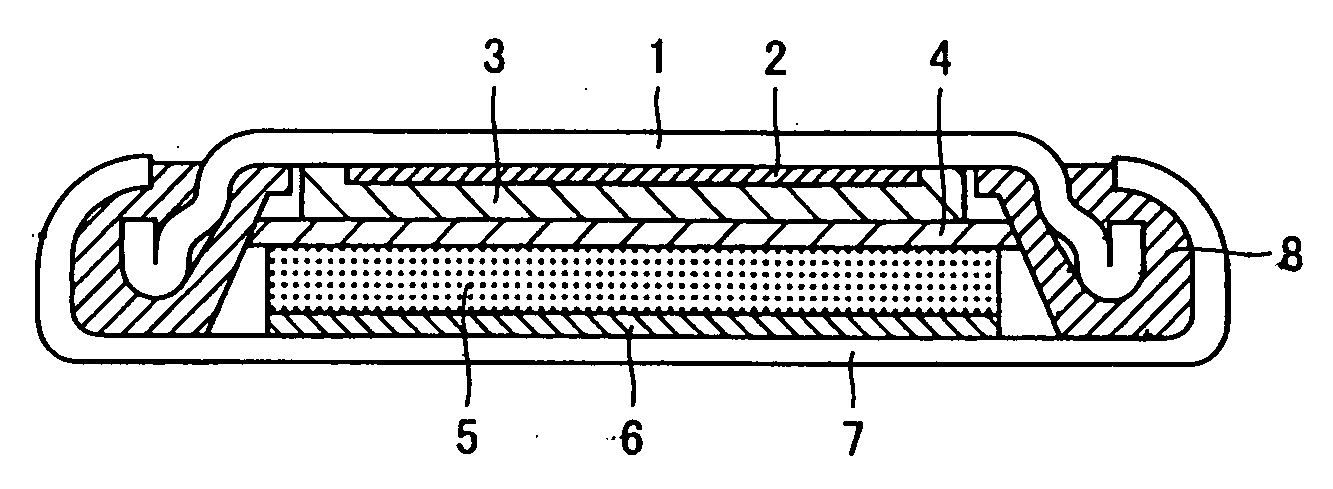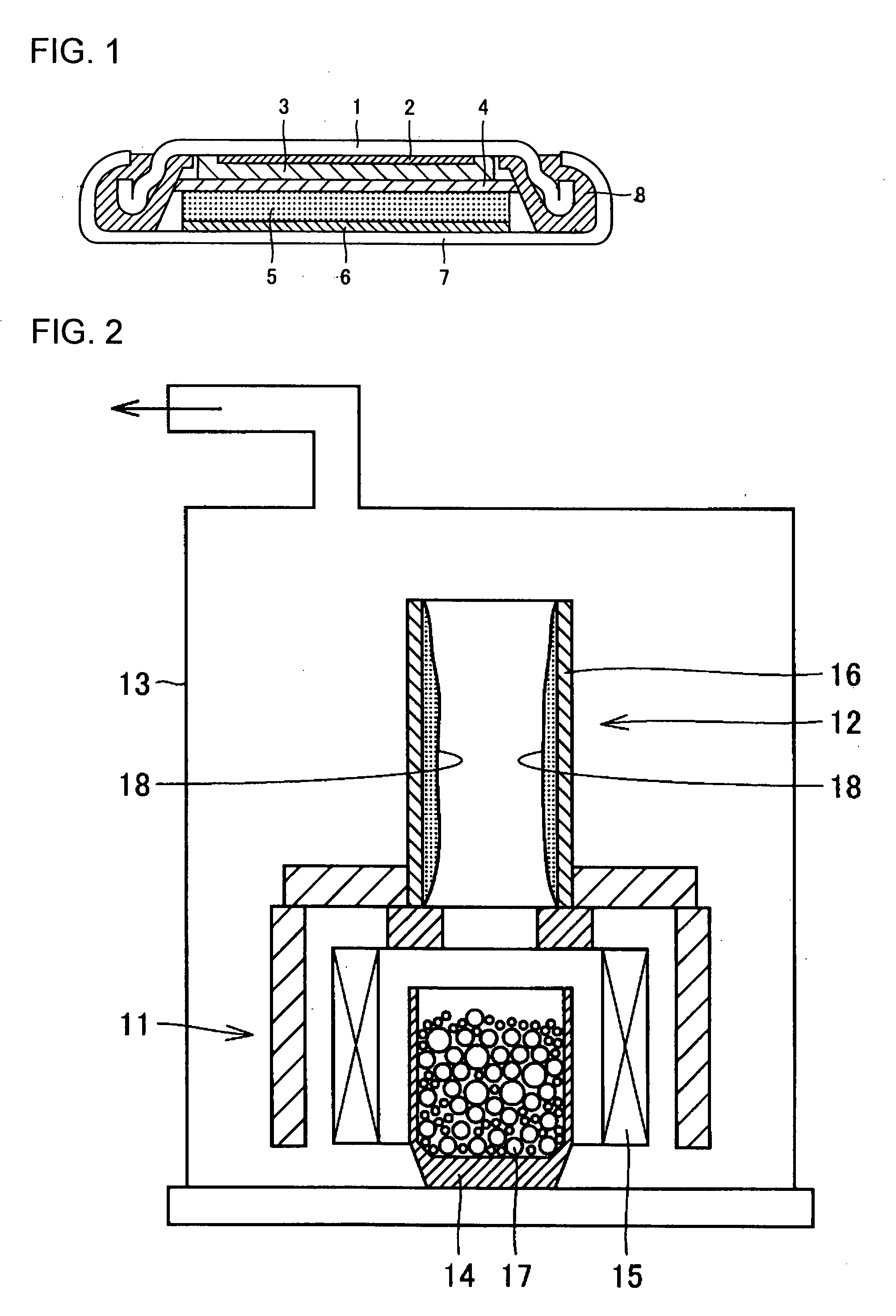Silicon Monoxide Powder For Secondary Battery and Method For Producing the Same
a secondary battery and silicon monoxide technology, applied in the field of silicon monoxide powder, can solve the problems of large irreversible capacity, insufficient durability (cycle property) of the discharge capacity for repeated charge and discharge, and the characteristics of the conventional lithium secondary battery do not always meet the requirements, so as to improve the discharge capacity and cycle capacity durability rate, the effect of miniaturization and cost reduction of the lithium secondary battery
- Summary
- Abstract
- Description
- Claims
- Application Information
AI Technical Summary
Benefits of technology
Problems solved by technology
Method used
Image
Examples
examples
[0049]The effect exerted by using the hydrogen-containing silicon monoxide powder of the present invention as the negative-electrode material of the lithium secondary battery will be described below based on specific inventive examples and comparative examples.
[0050]The coin-shaped lithium secondary battery shown in FIG. 1 is used in an evaluation test with the inventive examples and comparative examples. Four kinds of the silicon monoxide powders in which each hydrogen gas content is set to about 80 ppm, about 100 ppm, about 200 ppm, and about 300 ppm respectively are used as the negative-electrode material of the examples. Three kinds of the silicon monoxide powders in which each hydrogen gas content is set to about 30 ppm, about 40 ppm, and about 50 ppm are used as the negative-electrode material of the comparative examples.
[0051]The coin-shaped lithium secondary battery is produced to evaluate the characteristics of the lithium secondary battery, and the examples and the compara...
PUM
| Property | Measurement | Unit |
|---|---|---|
| temperatures | aaaaa | aaaaa |
| temperatures | aaaaa | aaaaa |
| temperatures | aaaaa | aaaaa |
Abstract
Description
Claims
Application Information
 Login to View More
Login to View More - R&D
- Intellectual Property
- Life Sciences
- Materials
- Tech Scout
- Unparalleled Data Quality
- Higher Quality Content
- 60% Fewer Hallucinations
Browse by: Latest US Patents, China's latest patents, Technical Efficacy Thesaurus, Application Domain, Technology Topic, Popular Technical Reports.
© 2025 PatSnap. All rights reserved.Legal|Privacy policy|Modern Slavery Act Transparency Statement|Sitemap|About US| Contact US: help@patsnap.com


